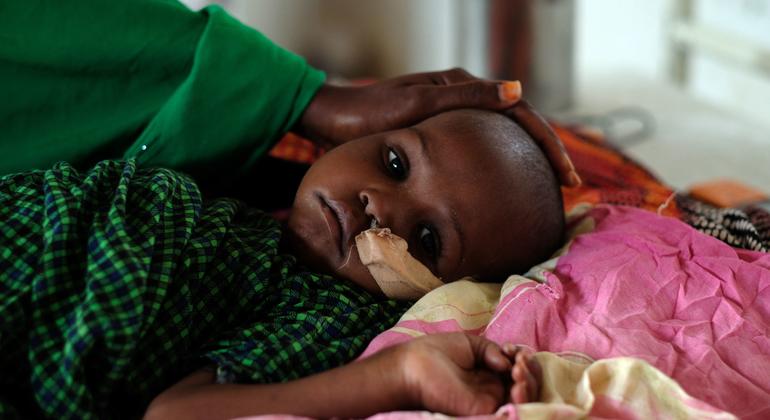Humanitarians call for greater support to prevent famine in the Horn of Africa

Humanitarians must prepare urgently to continue their life-saving work in Ethiopia, Kenya and Somalia, as the drought – the longest and worst in recent history – is set to last well into next year.
Even though nearly 21 million people are seriously food insecure – with some areas of Somalia still projected to face famine – response plans are only 50 percent funded.
Fear of famine also
“Despite the real uncertainty of rain forecasts, there is strong certainty about them There is an urgent need for international support and solidarity to avoid Famine (IPC Level 5) in the coming months,” the partners said, referring to the human scale of food insecurity.
Remembering that 260,000 people died in Somalia in 2011 in East Africa, with many deaths occurring before the famine was declared, they urged the world not to allow this situation to repeat itself.
“Given the rising death rates in many areas, the size of the affected population, and the possible duration of the crisis, the accumulated levels of death may become as high as in 2011. We cannot – and must not – wait for Choice (IPC Level 5) to be announcedor for additional rainy seasons to fail, to work,” their statement said.
Increase in infant mortality
Significant improvements in severe malnutrition have been observed across the Horn of Africa, the partners reported. In total, nearly 7.5 million children under the age of five are estimated to be affected, with 1.85 million facing the most severe condition.
Child deaths have also risen. A recent study that followed the dry season in Somalia, from March to June, found under-five mortality rates of more than two per 10,000 per day among the four population groups studied.
Many epidemics
More than 23.7 million people face daily problems in accessing water, thus increasing their vulnerability to water-borne diseases.
The situation also forces women and children to travel long distances to fetch water, putting them at risk of violence and exploitation.
“The effects of drought on health risks are also significant, and many ongoing epidemics, including measles and cholera, for which the worst health consequences when combined with malnutrition, are health concerns public health,” the statement said.
Some 1.77 million have fled their homes because they face very limited access to food, water, and other resources. These people are now internally displaced, and over 40,000 have sought refuge in neighboring countries since the beginning of the year.
The expected bad weather
The situation is deteriorating due to the poor start of the October to December rains, especially in Kenya and southern Somalia, the partners said.
These areas are expected to receive an average rainfall of at least 60 per cent for the period from 1 October to 15 November, with some areas experiencing the poorest start to the season on record.
“Worryingly, there is broad consensus across weather agencies that the likelihood of continued below-average rain through the rest of the season is high, resulting in the fifth consecutive poor season,” they noted.
Also, we should prepare for the possibility that March to May rainfall will again be below average, which will result in the sixth consecutive poor record.
Regardless of what happens with the rains next year, “recovering from a drought of this magnitude will take years, with enormous humanitarian needs s.et to continue and even increase in 2023″, said the partners.







